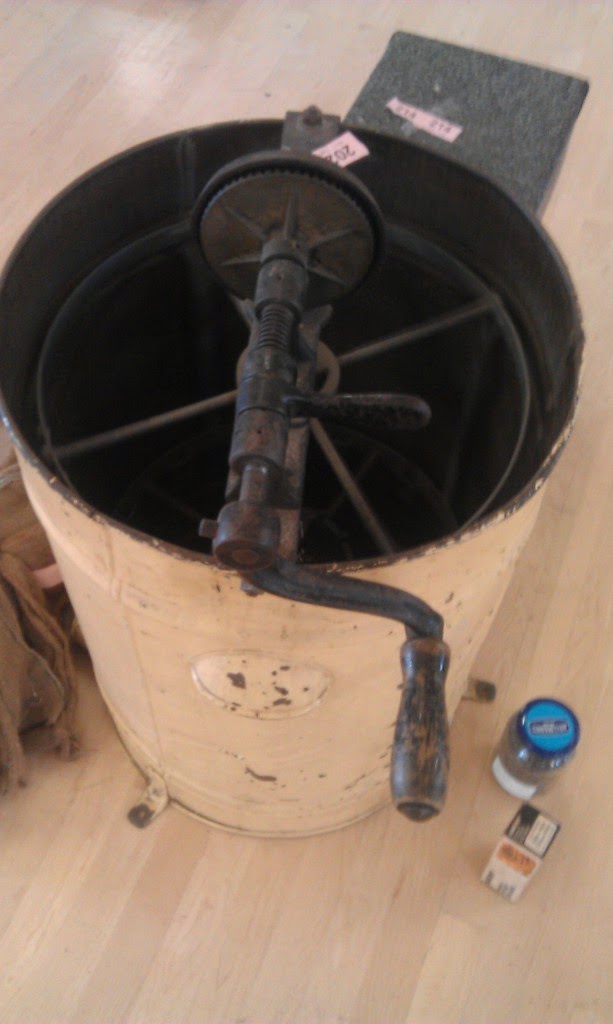According to the auction list there were about 30 colonies of bees going under the hammer. These ranged from complete National Hives down to 5 frame Nucleus boxes.
 |
| Few hundred thousand, seeking a good home. |
INnside the hall as per usual there was few clusters of Nuc boxes, beekeepers seem to wind up with a lot of those. I've got three of them knocking about myself and should maybe think of flogging one actually. The Heather Press that I'm sure has attended every auction I've been to wasn't there this year so perhaps it's found a home at last. There were a few WBC hives, white painted and straight from a postcard, various bits of National Hive, and a skep.
 |
| Olde Worlde Bee Hive |
Nowadays honey extractors need to be made from Stainless Steel or Food Grade Plastic, this one was probably galvanised steel or something so can't be used. It would've been nice as some kind of humongous ornament or for a museum perhaps but it didn't meet the reserve.
 |
| Potato sacks, used for clothing after a poor honey crop.. |
There was a few random items such as set of demijohns for the mead maker and a crate of 330ml bottles -I guess someone's going to be making a little home brew, a jar of sheradised nails and what appeared to be a brand new Handy Hand Push Lawn Mower was quickly snapped up. A manual lawn mower is just the thing for an apiary where you don't particularly want a loud motor to be annoying your bees. Never thought about it really but when I'm using my Flymo I always keep one eye on the hives just in case.
 |
| Nucs, lawnmowers, floors, hessian. Got it all. |
One thing I did bid on but didn't win was a commercial sized Brood Box, there was a little commercial equipment and only about 3 or 4 people bidding on it so I'd guess the WBC and National are still far more popular in the area at the moment. A futuristic looking shiny green polystyrene super and brood box with a hard plastic outer went for £6 which is pretty amazing for an almost complete hive, as someone commented probably reflects current opinion on poly hives -although poly Nuc boxes seemed to get a bit more attention.
There was a load of open mesh hive floors going in pairs and was after a couple of those so bid on a few, picking up a pair for the princely sum of £5. They didn't have sliding boards but if none of the ones I have fit I can easily make up a couple of those from some Correx signage I seem to have acquired for free.. Auctions are strangely unpredictable things and after a few pairs of floors went for around the £5-£7 mark similar lots started going for £17.
There was a batch of Claw Hive Tools sold for £2 a piece. I was actually wanting a second Hive Tool so I could prising both sides of each frame at the same time and speed up my hive inspections but missed out on these and picked up one of three Mann Lake tools instead. I think I paid about the same as they go for retail really but it was new and I saved on the postage :)
 |
| My modest haul |



























